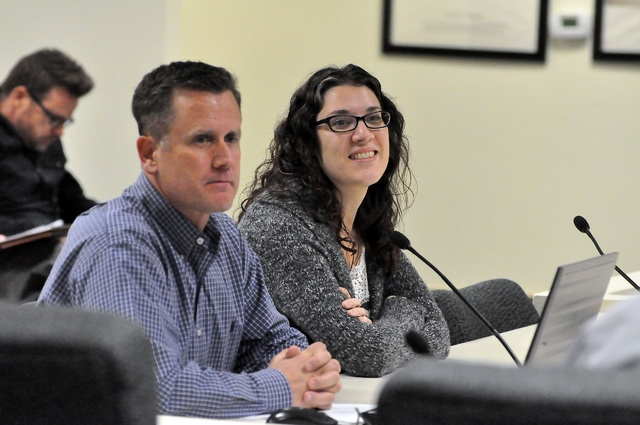New groundwater model tracks trends across valley
A new groundwater model for Basin 162 is consistent with historical water levels across the Pahrump Valley and officials hope to keep updating it as the water situation changes.
Greg Pohll, professor of hydrogeology at Desert Research Institute, presented a completed groundwater model for Basin 162 at the Nye County Water District Governing Board meeting on Monday.
“When we create these models, what we have to do is we have to basically create a balance between what’s coming in, this groundwater recharge and what’s going out,” he said. “And we do that by adjusting certain parameters in the model.”
The main parameter that’s being adjusted is permeability, the ability of the aquifer to transmit water.
“What we are trying to do is to create a balance between what’s coming in and what’s going out, and we have to make sure that the measured water levels are in agreement with the model, their simulated water levels,” Pohll said.
The two main springs in the Pahrump Valley that are discharging groundwater are Bennett and Manse springs. The valley also has a number of faults that act as barriers. The main one is a fault located near the California-Nevada line.
Pohll said a total recharge is estimated at 22,000-acre feet per year and the main input of water to the system is precipitation, according to the data.
The amount of discharge is 8,000-acre feet per year as evapotranspiration, the combined processes of evaporation of water from the soil and plants and transpiration of water through plants. Additionally, there are 5,800-acre feet of discharge per year for spring flow.
The model is able to match the general trends from the 1950s to the late 1970s when the pumping was high, and the valley had steep declines in water levels. It also shows the declining pumping and water levels that leveled out, Pohll said.
“We focused a little bit more on the trends because that’s a little bit more important when you are using a model for management decisions. You want to see how rapidly water levels are going to decline or rise,” he said.
“I think this model is now ready to be used for planning purposes, and we are giving it to anybody who would like to use it … to try to assess future conditions in this system. It is matching historical water levels quite well and also the trends in spring flow rates,” Pohll said.
Nye County Water District Governing Board interim director Wichman called the model “a great tool.”
“My intention is to share this model, make sure it’s available for everybody,” he said. “I think it’s a pretty useful thing.”
Rick Felling, deputy administrator of Nevada Division of Water Resources, said other parties might be interested in improving the map.
“We will certainly maintain a copy of this model, and we will continue to use it,” Felling said. “I don’t foresee us in the near term trying to modify the model and upgrade it. Maybe at some point in time after we had an opportunity to use it more and see how exactly it performs, they will have some specific ideas on improvements.”
The model will be available at no cost to firms doing business in the Pahrump basin, officials said.
The Desert Research Institute will draft a technical memo to accompany the model which will be completed in the next 30 days.
Contact reporter Daria Sokolova at dsokolova@pvtimes.com. On Twitter: @dariasokolova77
















